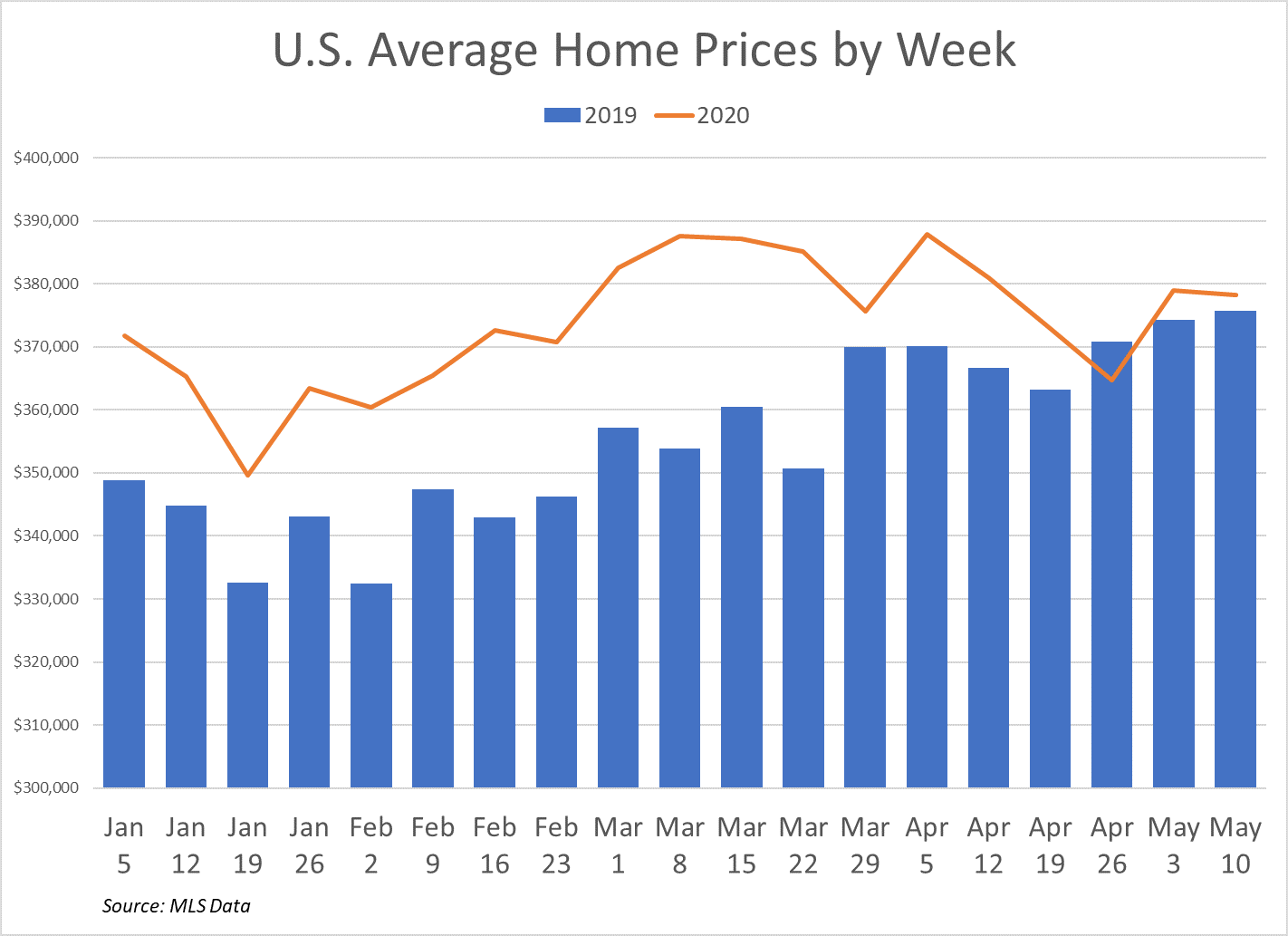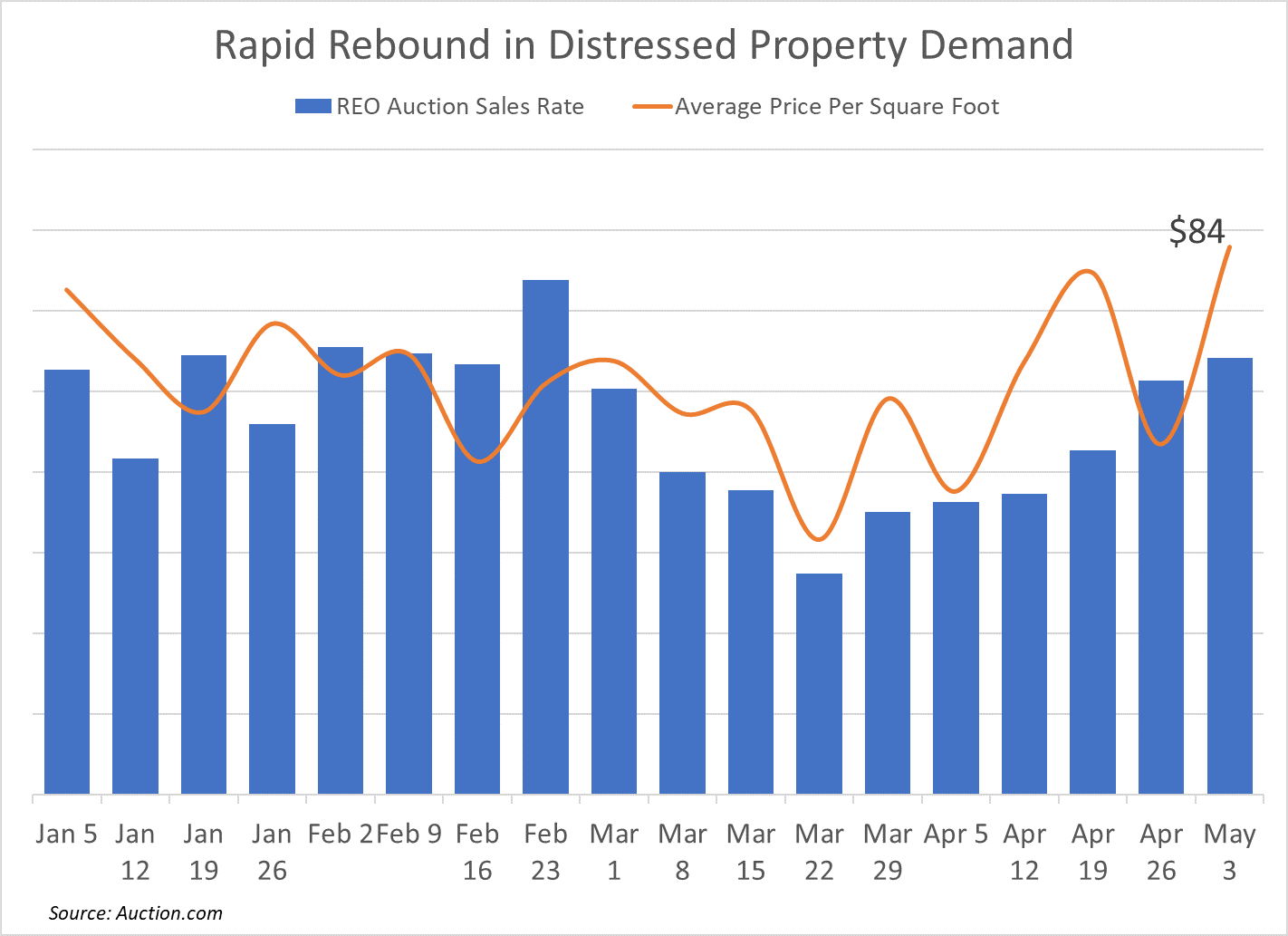
Real estate investors took a licking in late March following the coronavirus pandemic and national emergency declarations.
“It’s going to be tough the next few months. Investors are scared,” said Chicago-area investor Michael Hallman in a March 26 phone interview. Hallman has been rehabbing and reselling 12 to 20 properties a year since 2012 and owns about 15 rental properties. “I’ve got about 10 properties right now for sale. … I’ve taken lower prices than normal. …I’ve had people pulling out of them because of the coronavirus.”
But two months later it’s clear that real estate investing opportunities have kept on ticking despite the market turmoil.
“Everybody’s buying like it’s the last house on earth,” said a spokesman for a New York-based institutional investor in an April 26 phone interview. He explained that his company buys, rehabs and resells 1,500 to 2,000 distressed properties a year, mostly to owner-occupants. “Anecdotally things are moving, inquiries are high. … We see that our suburban, exurban, almost rural stuff is moving. Stuff that has been on for 300 or 400 days.
“We had expected it to be softer than it is,” he continued, referring to the post-COVID real estate market.
A Rapid Real Estate Rebound
The rapid real estate rebound post-COVID is evident in both retail market data from the Multiple Listing Service (MLS) and distressed market data from the Auction.com marketplace.
While retail home sales continue to lag 30 to 50 percent below year-ago levels, average home sale prices for the most part have continued to increase on an annualized basis, according to an Auction.com analysis of weekly MLS data. The analysis shows that home prices have increased an average of 3 percent compared to a year ago in the nine weeks since the pandemic and national emergency declarations. Prices did go negative in one week, the week starting April 26, but bounced back to positive appreciation in the following two weeks.

Furthermore, mortgage application data from the Mortgage Bankers Association (MBA) shows prospective buyer demand strengthening, with purchase applications in the week ending May 22 increasing 9 percent from the previous week and 9 percent from the same week a year ago. The week of May 22 marked the sixth consecutive week with a week-over-week increase in purchase mortgage applications.
Real estate investor demand has also picked up after slowing down in late March, with the sales rate for online auctions of bank-owned (REO) property rising for six consecutive weeks to a 10-week high in the week starting May 3, according to proprietary Auction.com marketplace data. The average price per square foot for REOs sold via online auction hit a new year-to-date high of $86 that same week.
“(The pandemic) hasn’t stopped me. I’ve been buying and buying and buying,” said one distressed property investor who said he had purchased more than 75 properties through Auction.com so far in 2020 by the middle of May. “I’m probably doing more than I did last year, and I had a big year last year.”

The rising sales prices in both the retail and distressed market are not only a function of strengthening demand; they also reflect dwindling supply. In the nine weeks after the pandemic declaration, new listings on the MLS were down an average of 41 percent a week.
Meanwhile nationwide foreclosure moratoriums enacted by Fannie Mae, Freddie Mac and the Department of Housing and Urban Development (HUD) — which account for more than 60 percent of active mortgages — have temporarily decimated the supply of in-person foreclosure auctions. According to public record data from ATTOM Data Solutions, nearly 18,000 properties were brought to foreclosure auction on average in the first two months of 2020, but that supply dropped 85 percent to about 2,500 properties brought to auction in April.
Now-and-Not-Yet Buying Opportunities
In light of the pent-up distressed inventory that eventually will hit the market once foreclosure moratoriums are lifted and mortgage forbearance programs are ended, many investors are proceeding with caution on acquisition opportunities now even while preparing for an even bigger future buying opportunity that has not yet materialized.
“It’s an artificial high right now. In the background the next wave is coming,” said Lee Kearney, CEO of Spin Companies, a group of real estate investing businesses that has completed more than 6,000 real estate transactions since 2008. “I’m definitely in wait-and-see mode.
“Real estate is not the stock market … real estate moves in quarters,” Kearney added. “We may actually have another quarter where prices rise in certain markets… but at some point it’s going to slip the other way.”
Kearney continues to acquire properties for his investing business, but with more conservative exit pricing, maximum rehab cost estimates and higher profit targets in order to convert to more conservative purchase prices.
“Those three variables give me an increased margin of error,” he said, noting that if he does start buying at higher volume, it will be outside of the large institutional investor’s buy box. “The biggest opportunity is going to be where the institutions won’t buy.”
The spokesman for the New York-based institutional investor explained how the buying opportunity now is connected to the bigger future buying opportunity that will come when the pent-up foreclosure inventory is released.
“I do think the banks are anticipating more foreclosures and so they are going to make room on their balance sheets … they are going to be motivated to sell,” he said.
Although the average price per square foot for REO auction sales increased to a year-to-date high in the week of May 3, those bank-owned properties are still selling at a significant discount to retail.
Year-to-date in 2020, REO auction properties sold on the Auction.com platform have an average price per square foot of $77 while non-distressed properties (those not in foreclosure or bank-owned) have sold at an average price per square foot of $219, according to public record data from ATTOM Data Solutions. That means REO auction properties are selling 65 percent below the retail market on a price per square foot basis.
Similarly, the average sales price for REO auctions sold in the week of May 3 was $144,208 compared to an average sales price of $379,012 for properties sold on the MLS that same week. That translates to a 62 percent discount for REO auctions versus retail sales.
Those types of discounts should help protect against any future market softening caused by an influx of foreclosures, but the spokesman for the New York-based institutional investor still advised a cautious acquisition strategy in the short term.
“The foreclosures will catch up to us and it will hurt the entire market everywhere, and you don’t want to be caught holding the bag when that does happen,” he said.
Others view any influx of deferred foreclosure inventory as providing welcome relief for a supply-constrained market.
“It will help with the tight supply in these markets … because the providers we work with are going to see more distressed inventory they can pick up at a discount, whether at auction or wherever, and turn into a turnkey product,” said Marco Santarelli, founder of Norada Real Estate Investments, a provider of turnkey investment properties to passive individual investors. “We’re still in a seller’s market. … The sustained demand for property, whether homes or rentals, has not waned a lot. It has paused a bit, but people are coming back.”
